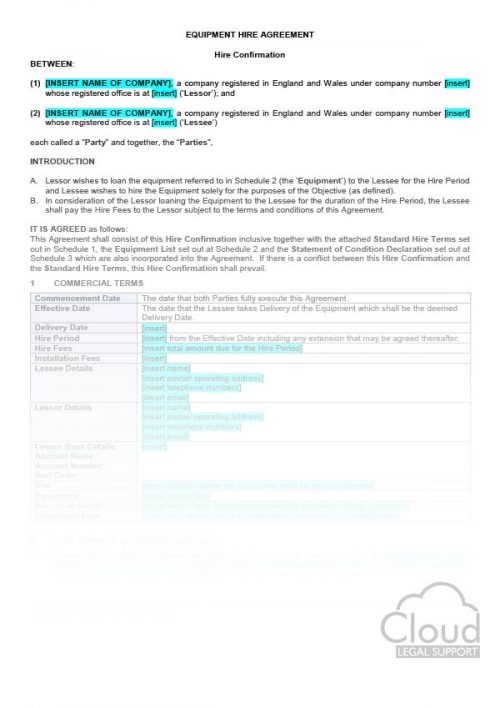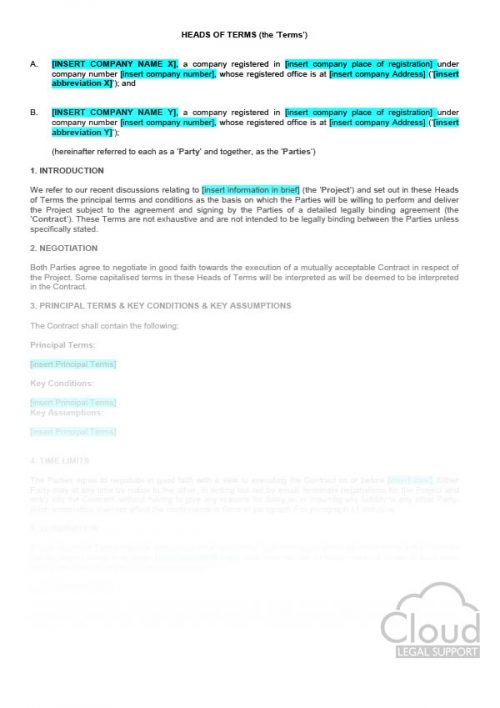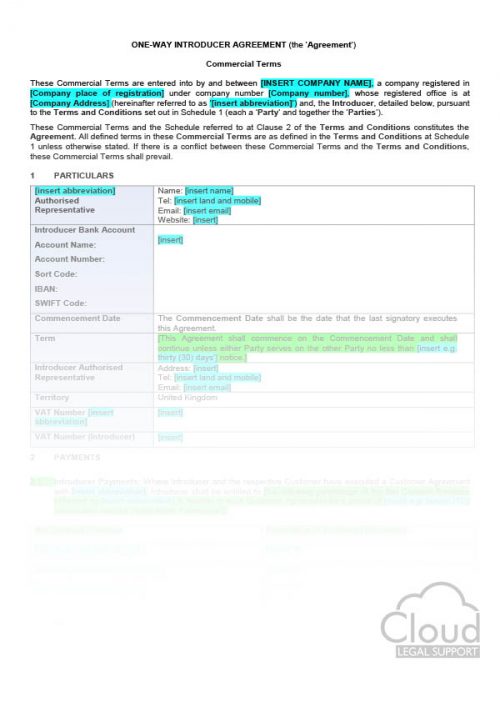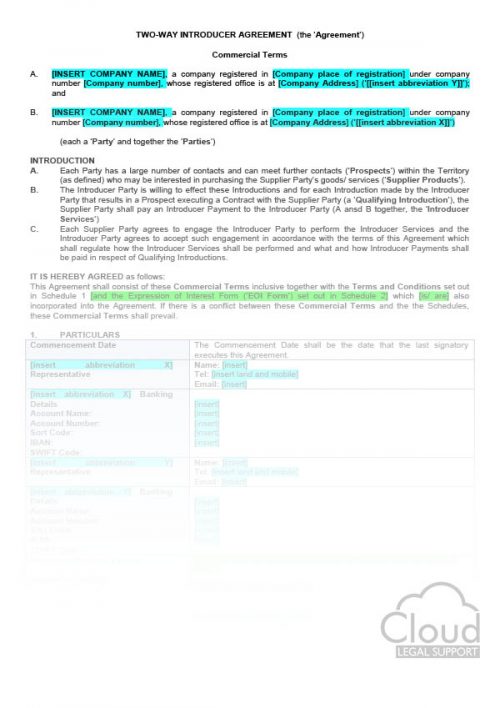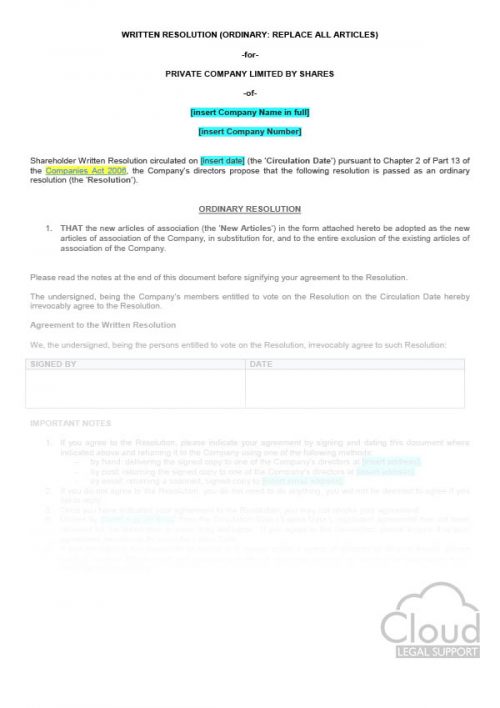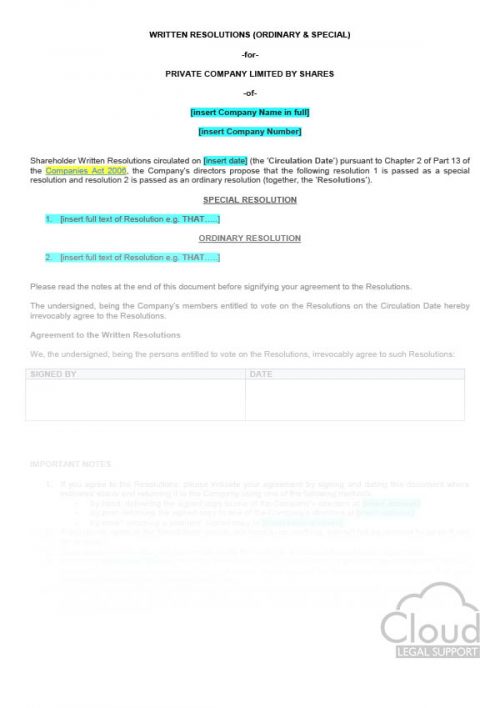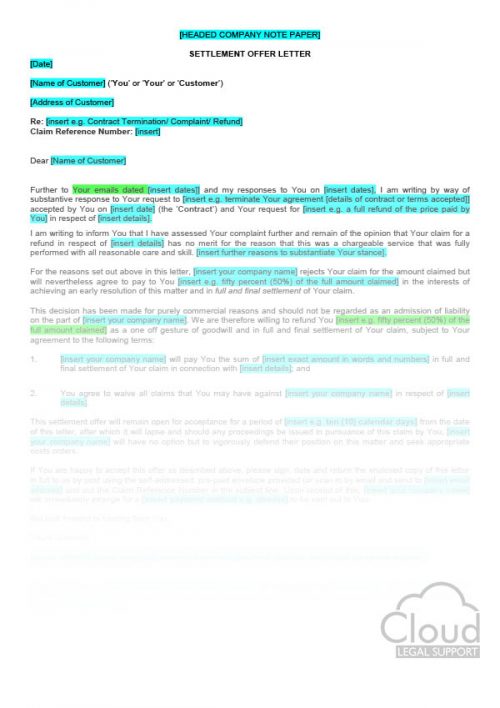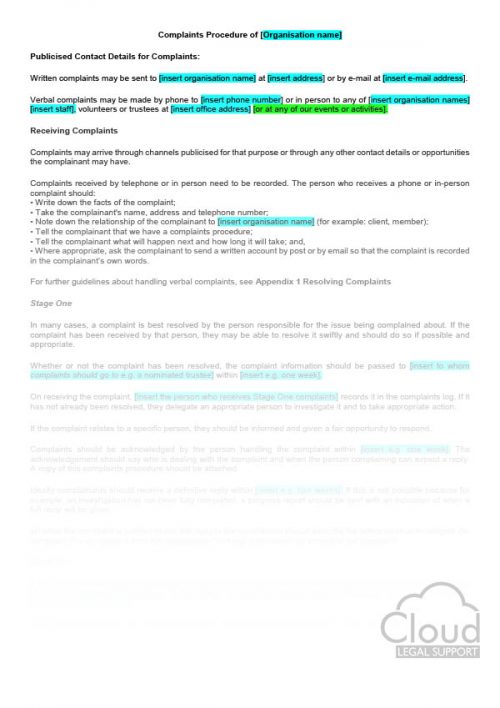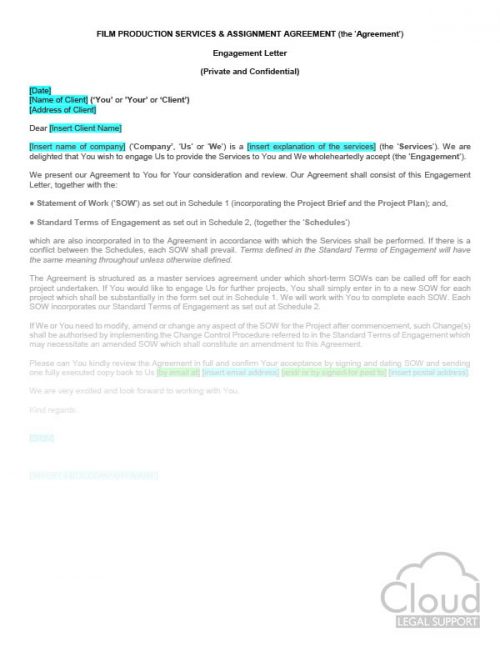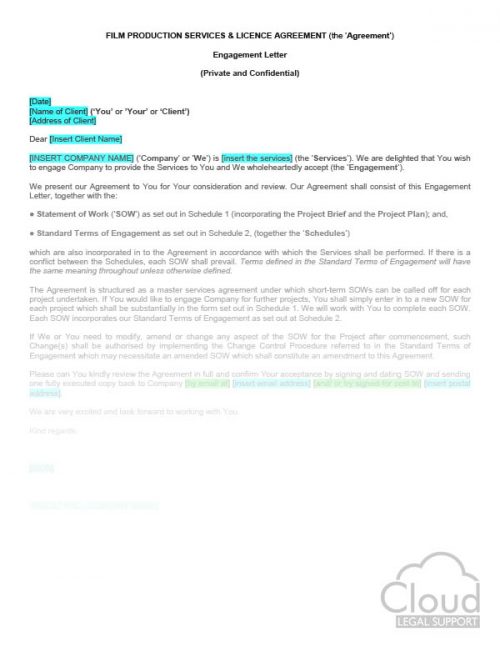-
This agreement should be used when hiring equipment either between companies or to individuals. For example; plant, audio visual equipment etc. This agreement sets out the terms of the hire, the costs and installation arrangements as well as setting out who is liable for any loss or damage to the equipment.
-
This agreement is used when a homeowner is engaging the services of a third party to market their property for them in respect of short-term holiday lets. It sets out the respective responsibilities of the homeowner and the third party. It includes the following terms:
- the Homeowner Commercial Terms and Terms and Conditions at Schedule 1;
- the Guest Booking Terms and Conditions set out in Schedule 2;
- the Property Inventory set out in Schedule 3; and
- the Data Processing Addendum set out in Schedule 4
-
This document should be used where two parties have begun negotiations but haven’t entered into any formal agreements. They are used to outline the terms of a commercial transaction where certain terms or aspects of the deal have been agreed in principle during initial discussions or negotiations. These Heads of Terms are not legally binding (unless expressly specified) and neither party is compelled to enter into an agreement on the terms in the Heads of Terms, or at all.
-
To be used when a business is referring new customers to another business. This sort of arrangement is common where a business’ customers may benefit from the services offered by another business. The business may direct (or introduce/ refer) the customer to that business and claim a fee for doing so. This agreement sets out how the arrangement will work. Fees payable are contingent upon the Prospect contracting with the Company as a result of the Introduction made by the Introducer.
-
-
This document is used to where an ordinary resolution is being passed to replace all of the articles of association of a company. Where only one or two articles need to be changed, a Private Company Resolution (Ordinary to change one Article) should be used.
-
This document is used to where an ordinary resolution is being passed to change one article of the company’s articles of association. Where all of the articles are being changed, a Private Company Resolution (Ordinary to replace ALL Articles) should be used.
-
This document is used to pass both an ordinary and a special resolution. It can be used to pass more than one of each type of resolution at a time. It should be sent out to shareholders for them to return indicating their agreeance with the resolutions. Where only ordinary resolutions are being passed (more than 51% of shareholders votes) then Private Company Resolution (Ordinary) should be used. Where only special resolutions are being passed (more than 75% of shareholders votes) then Private Company Resolution (Special) should be used.
-
To be used when a business is conducting a prize draw. This agreement sets out the terms that the draw will be conducted under, entry criteria and any exclusions or restrictions.
-
This document is used to pass special resolutions which require 75% of shareholders votes to pass. It can be used to pass more than one special resolution at a time. It should be sent out to shareholders for them to return indicating their agreeance with the resolution. Where a resolution can be passed by ordinary resolution (more than 51% of shareholders votes) then Private Company Resolution (Ordinary) should be used.
-
This document is used to pass ordinary resolutions which require 51% of shareholders votes to pass. It can be used to pass more than one ordinary resolution at a time. It should be sent out to shareholders for them to return indicating their agreeance with the resolution. Where a resolution needs to be passed by special resolution (more than 75% of shareholders votes) then Private Company Resolution (Special) should be used.
-
This letter should be sent to customers who have made a complaint about the services of a company. This letter should be sent when an offer is being made to the customer to settle the dispute. The customer does not have to accept this but if they do accept it, that should be the matter over. The letter stresses that the offer is not an acceptance of liability for the complaint on the part of the supplier/ service provider but is being made for purely commercial reasons.
-
This agreement is used when a business Customer is ordering services to be provided by a Company. The agreement sets out what services are being ordered and on what terms.
-
To be used in the context of the sale and purchase of the entire issued share capital of a private company, where the buyer requires some (or all) of the target company's directors to resign on completion of the transaction. This is a common requirement in UK transactions, as the buyer will usually want to replace the current directors and/or company secretary with its own. A letter of resignation by a director of a company includes an acknowledgement that the resigning officer has no claims outstanding against the company and a waiver of any claims that may exist. Filing: Notice of the resignation must be given to the Registrar of Companies within 14 days (section 167 of the Companies Act 2006). The relevant form to use for this purpose is Form TM01.
-
For use when three parties are providing each other with information that is confidential and of a sensitive/ commercial nature. By signing this agreement the recipient person or company is agreeing that they will not use any such confidential information outside the scope of the agreement to their advantage either by competing directly with the other party or by approaching the other parties’ clients in an attempt to obtain their business.
-
This document will be customer facing and will be provided to customers who wish to make a complaint explaining how one can make a complaint and what process the company will follow in order to resolve the complaint.
-
This document is used to set out how a business will handle any complaints it receives. It is envisaged that this document will be used internally by staff and will guide and inform them as to how to manage any complaints and what process the company will follow should they receive any complaints from customers.
-
The document is to be used where a production company is creating a film for the client and grants the client an assignment of all IP in the Deliverables that can be legally assigned. The Agreement for film production services, comprises the Engagement Letter, the Statement of Work set out in Schedule 1 (incorporating the Project Brief and the Project Plan) and the Standard Terms of Engagement set out in Schedule 2. If you need a licence instead, you can opt to purchase the following instead: Film Production Services & Licence.
-
The document is to be used where a production company is creating a film for the client and grants the client a non-exclusive Licence only of the final Deliverables. The Agreement for film production services, comprises the Engagement Letter, the Statement of Work set out in Schedule 1 (incorporating the Project Brief and the Project Plan) and the Standard Terms of Engagement set out in Schedule 2. This agreement can be adapted easily for an exclusive or sole licence. Alternatively, if you need an assignment as opposed to a licence, you can opt to purchase the following instead: Film Production Services & Assignment.

